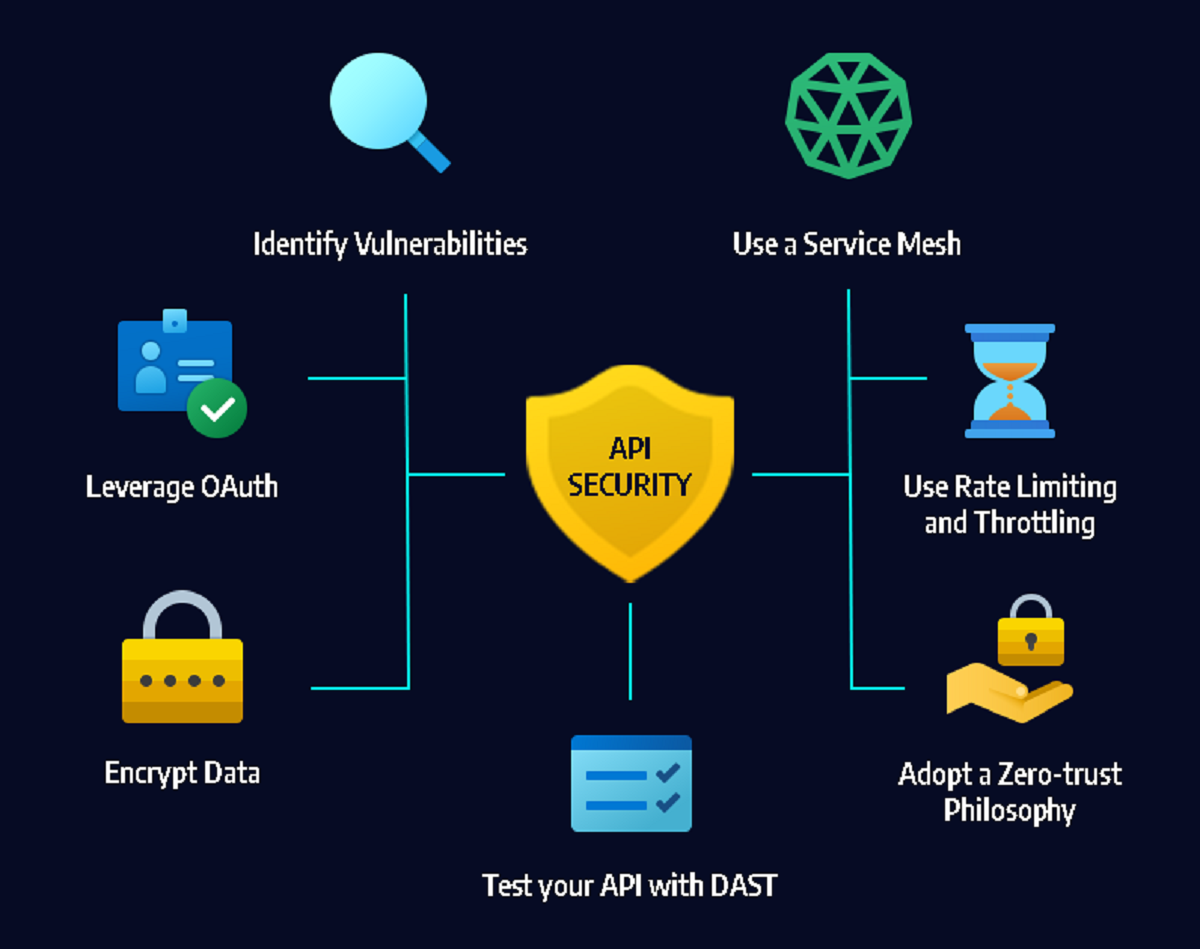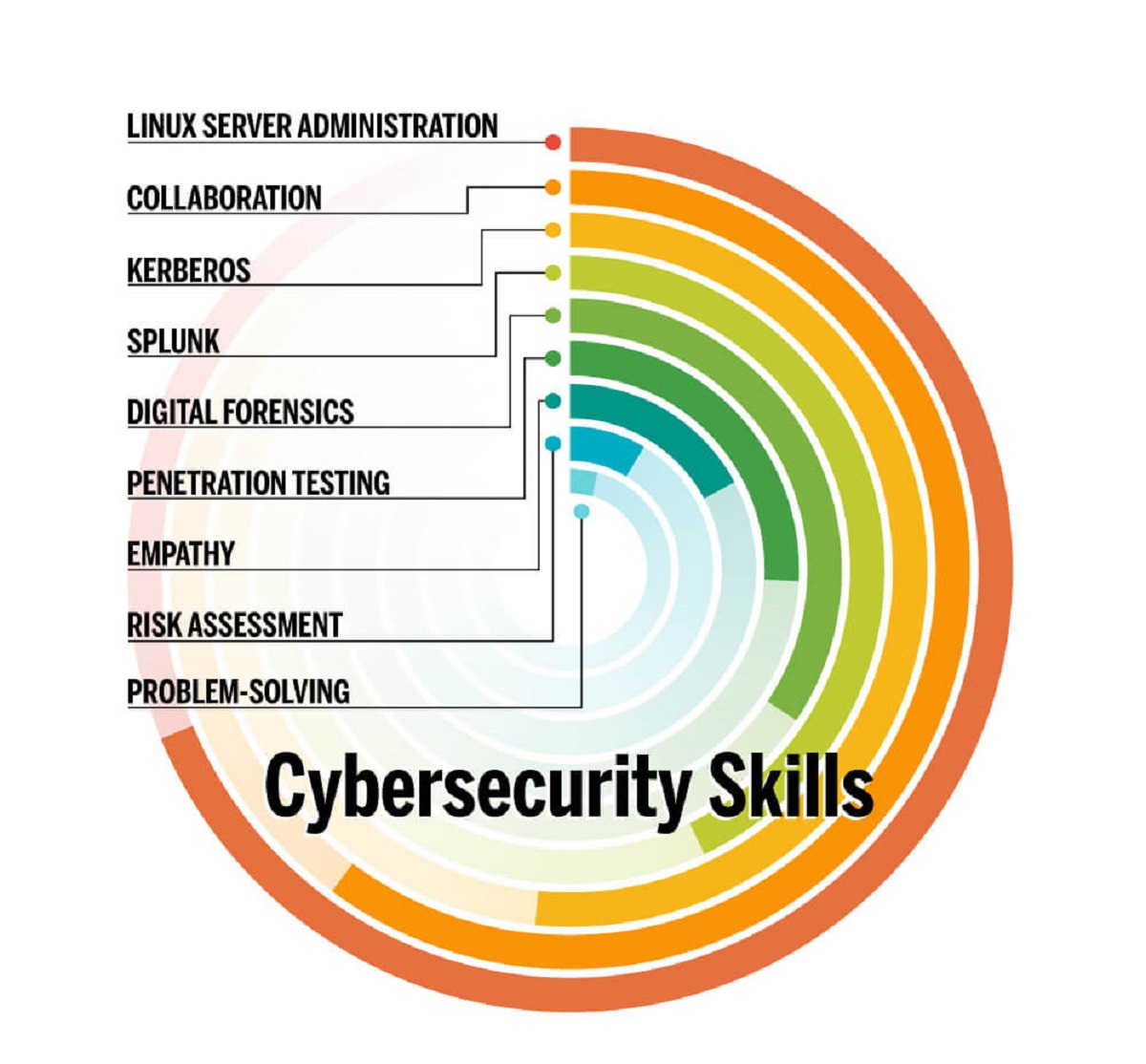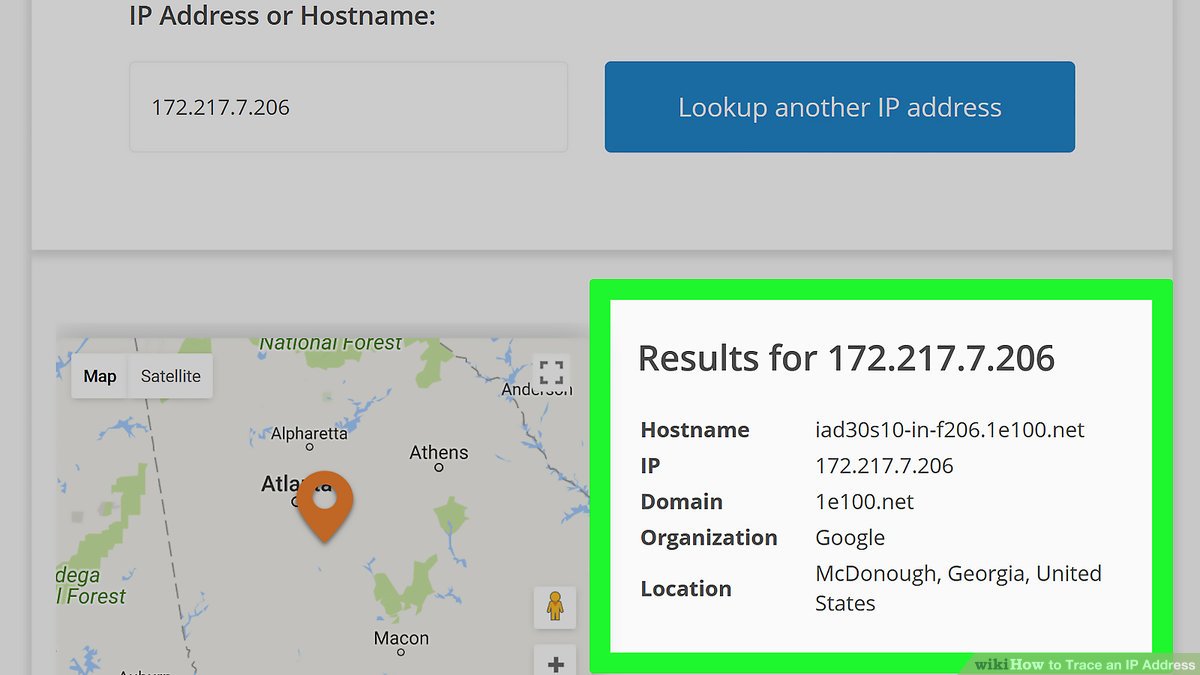Why API Cybersecurity Matters
APIs, or Application Programming Interfaces, have become an integral part of modern software development. They allow different applications to communicate and exchange data, enabling seamless integration and interaction between various systems. With the increasing reliance on APIs, cybersecurity has emerged as a critical concern that cannot be ignored.
API cybersecurity is paramount to protect the integrity, confidentiality, and availability of sensitive information. APIs often handle sensitive data, such as user credentials, payment information, and personal details. A breach in API security can expose this information, leading to financial loss, reputational damage, and non-compliance with data protection regulations.
Ensuring API cybersecurity is not just about safeguarding the data being transferred; it also protects against attacks that can disrupt services and compromise system stability. By implementing robust cybersecurity measures, organizations can prevent unauthorized access attempts, data leaks, and potential damage to their infrastructure.
Moreover, API cybersecurity is essential for building trust and maintaining business relationships. When businesses expose their APIs to external developers or partners, they need confidence that the APIs are secure and will not put their customers’ data at risk. By prioritizing API security, organizations can demonstrate their commitment to safeguarding sensitive information, fostering trust, and encouraging collaboration.
Additionally, API cybersecurity plays a crucial role in meeting compliance requirements. Data privacy regulations, such as the General Data Protection Regulation (GDPR) and the California Consumer Privacy Act (CCPA), demand stringent security measures to protect personal data. Failure to meet these requirements can result in severe penalties and legal consequences. Implementing robust API security practices ensures compliance with these regulations, mitigating the risk of penalties and legal complications.
Overall, API cybersecurity matters because it safeguards sensitive data, ensures the continuity of services, builds trust among users, and helps organizations meet regulatory obligations. Neglecting API security can have severe consequences and put businesses at risk of data breaches, financial loss, and legal implications. By prioritizing API cybersecurity, organizations can elevate their data protection practices, enhance their reputation, and establish themselves as trusted industry players.
Introduction
As technology continues to advance, the need for efficient and seamless integration between various systems becomes crucial. APIs (Application Programming Interfaces) have emerged as a fundamental component, enabling different software applications to communicate and exchange data. From social media platforms to e-commerce websites and financial institutions, APIs have become the backbone of modern digital ecosystems.
However, with the increasing reliance on APIs, the importance of API cybersecurity cannot be overstated. APIs handle vast amounts of sensitive data, including personal information, financial details, and authentication credentials. This makes them an attractive target for cybercriminals seeking to exploit vulnerabilities and gain unauthorized access to valuable data.
API cybersecurity refers to the practices and measures put in place to protect APIs and the data they transmit from potential security breaches. It involves addressing vulnerabilities, implementing robust authentication and access control mechanisms, and ensuring proper encryption and secure communication protocols.
The significance of API cybersecurity lies in safeguarding the integrity, confidentiality, and availability of sensitive information. A breach in API security can have severe consequences, including financial loss, reputational damage, and non-compliance with data protection regulations. Organizations that fail to prioritize API security may face legal consequences, customer distrust, and potential loss of business.
In addition to data protection, API cybersecurity plays a vital role in maintaining the stability and reliability of systems. Without proper security measures, APIs are vulnerable to various types of attacks, such as injection attacks, denial-of-service attacks, and API abuse. These attacks can disrupt services, compromise system performance, and cause significant financial and operational damage.
Moreover, API cybersecurity is crucial for building trust and fostering collaboration among different stakeholders. Organizations often expose their APIs to external developers, partners, and third-party applications. By ensuring robust API security, businesses can provide assurance to these stakeholders that their data will be handled securely, thereby encouraging collaboration and promoting innovation.
In essence, API cybersecurity is a critical aspect of modern digital environments. It protects sensitive data, ensures system stability, builds trust, and helps organizations comply with data protection regulations. By investing in robust API security measures, businesses can safeguard their valuable assets, maintain customer trust, and establish themselves as leaders in data protection and cybersecurity.
Understanding APIs
APIs, or Application Programming Interfaces, are the bridge that allows different software applications to communicate and interact with one another. They define a set of rules and protocols that enable developers to access specific functionalities and retrieve or manipulate data from other applications or services.
At its core, an API acts as an intermediary, allowing applications to request and exchange information seamlessly. It provides a standardized way for different systems to interact without having to share their underlying code or infrastructure.
APIs come in various forms, such as web APIs, which use HTTP protocols for communication, and operating system APIs, which expose system-level functionalities to developers. They can be public, allowing third-party developers to build applications or integrations, or private, meant solely for internal use within an organization.
APIs operate through a request-response mechanism. A client application sends a request to the API, specifying the desired operation and any necessary parameters. The API processes the request, performs the required actions, and returns a response with the requested data or the outcome of the operation.
APIs enable developers to leverage existing functionalities and data from other applications, reducing redundancy and promoting code reusability. They empower developers to build innovative applications and integrations by leveraging the capabilities of other systems without having to reinvent the wheel.
One of the key advantages of APIs is their ability to facilitate seamless integration between different applications, even if they are built on different technologies or platforms. APIs abstract away the complexity of underlying systems, allowing developers to focus on utilizing the exposed functionalities rather than worrying about the intricacies of implementation.
Furthermore, APIs play a crucial role in enabling businesses to expand their reach and unlock new opportunities. By exposing APIs to external developers and partners, organizations can create ecosystems that foster collaboration and innovation. This not only enhances their own offerings but also allows them to tap into the creativity and expertise of developers outside their organization.
In summary, APIs are the foundation of modern software development. They enable different applications to communicate, share data, and leverage each other’s functionalities. APIs facilitate seamless integration, promote code reusability, and empower businesses to expand their offerings and collaborate with external stakeholders. Understanding APIs is a fundamental step in realizing the potential of interconnected systems and driving innovation in the digital world.
The Significance of API Cybersecurity
APIs have revolutionized the way software applications interact and exchange data, making them a critical component in today’s digital landscape. However, with the increased reliance on APIs comes the heightened need for robust API cybersecurity measures.
API cybersecurity refers to the protection of APIs and the data they handle from potential security breaches, unauthorized access, and malicious attacks. It ensures the integrity, confidentiality, and availability of sensitive information transmitted through APIs, guarding against financial loss, reputational damage, and regulatory non-compliance.
The significance of API cybersecurity cannot be underestimated. APIs often handle sensitive data, including personally identifiable information, financial records, and authentication credentials. A breach in API security can expose this data, leading to identity theft, financial fraud, and compromised privacy. Protecting this information is not only crucial for maintaining customer trust but also to comply with data protection regulations such as the GDPR and CCPA.
Furthermore, API security is essential to prevent attacks on systems and infrastructure. Without proper security measures, APIs can become vulnerable to various types of attacks, including injection attacks, denial-of-service attacks, and man-in-the-middle attacks. These attacks can disrupt services, compromise system availability, and lead to financial and operational losses.
API cybersecurity also plays a vital role in protecting against API abuse. Malicious actors may attempt to abuse APIs by performing excessive requests or exploiting vulnerabilities, causing system overload, service degradation, and potential business disruption. Implementing strong security controls, such as rate limiting and throttling, helps prevent API abuse and ensures fair resource allocation.
Moreover, API cybersecurity is not just about protecting against external threats; it also involves ensuring secure authentication and authorization mechanisms. Implementing strong authentication protocols, such as OAuth or API keys, helps verify the identity of the requesting party and ensures only authorized access to APIs. Access controls, such as role-based access control, help enforce fine-grained authorization policies, limiting access to sensitive data and functionalities.
In summary, API cybersecurity holds immense significance in today’s interconnected digital ecosystem. It not only protects sensitive data and prevents unauthorized access to APIs but also safeguards against attacks, system disruptions, and potential financial losses. By prioritizing API cybersecurity, organizations can establish a robust security posture, foster customer trust, comply with data protection regulations, and ensure the uninterrupted operation of their APIs and interconnected systems.
Common API Security Vulnerabilities
While APIs provide valuable functionality and enable seamless integration between applications, they can also introduce security vulnerabilities if not properly secured. Understanding and addressing these common API security vulnerabilities is crucial in protecting the integrity and confidentiality of sensitive data.
1. Injection Attacks: APIs are susceptible to injection attacks, where malicious actors inject malicious code or commands into user inputs, leading to unauthorized access or unintended actions. Protecting APIs against injection attacks involves implementing input validation and parameterized queries to sanitize and validate user input.
2. Broken Authentication: Weak authentication mechanisms or improper implementation can expose APIs to password cracking, session hijacking, or brute force attacks. API security should include robust authentication measures, such as strong password policies, multi-factor authentication, and secure session management.
3. Unauthorized Access: APIs may be vulnerable to unauthorized access if proper access controls are not enforced. Attackers can exploit this vulnerability to gain unauthorized access to sensitive information or perform malicious actions. Implementing strong authorization mechanisms, such as role-based access controls, helps prevent unauthorized access to APIs.
4. Insufficient Encryption: APIs that transmit sensitive information without proper encryption are at risk of data interception and unauthorized disclosure. It is crucial to implement strong encryption protocols, such as Transport Layer Security (TLS), to protect data in transit and ensure its confidentiality and integrity.
5. Lack of Input Validation: APIs that do not validate or sanitize user inputs properly are susceptible to input-based attacks, such as Cross-Site Scripting (XSS) and SQL Injection. Input validation and parameter manipulation play a crucial role in mitigating these vulnerabilities and ensuring the integrity of data.
6. Inadequate Rate Limiting and Throttling: APIs without proper rate limiting and throttling mechanisms are vulnerable to abuse and denial-of-service attacks. Attackers can overwhelm the API by sending excessive requests, disrupting services and causing system instability. Implementing rate limiting and throttling helps protect APIs from abuse and ensures fair resource allocation.
7. Inadequate Logging and Monitoring: Insufficient logging and monitoring of API activities make it difficult to detect and respond to cybersecurity incidents effectively. Implementing robust logging and monitoring practices allows for the timely detection of suspicious activities, ensuring swift response and mitigating potential threats.
Addressing these common API security vulnerabilities requires a multi-layered approach. It involves implementing secure coding practices, conducting regular security assessments and penetration testing, and staying updated with the latest security threats and best practices.
By proactively addressing these vulnerabilities, organizations can strengthen the security posture of their APIs, protect sensitive data, and build trust with their users and partners.
Authentication and Authorization
Authentication and authorization are fundamental elements of API security that ensure only authorized users and systems access the desired resources, protecting against unauthorized access and potential data breaches. These two processes work hand in hand to verify the identity of users and enforce proper access controls.
Authentication: Authentication is the process of verifying the identity of a user or system attempting to access an API. It ensures that only legitimate users can access protected resources. Common authentication methods include:
- Username and Password: The most common form of authentication, requiring users or systems to provide valid credentials to gain access.
- Token-based Authentication: This method involves using tokens, such as JSON Web Tokens (JWT) or OAuth tokens, to authenticate and authorize API requests.
- Biometric Authentication: Utilizing biometric data, such as fingerprints or facial recognition, to verify the identity of users.
- Multi-Factor Authentication (MFA): Adding an extra layer of security by requiring users to provide multiple forms of authentication, such as a password and a one-time verification code.
Authorization: Once a user’s identity is verified through authentication, authorization determines what actions they are allowed to perform and what resources they can access within the API. Authorization is based on the user’s assigned roles, permissions, or specific access policies. Common methods of authorization include:
- Role-based Access Control (RBAC): Assigning user roles with specific privileges and permissions based on their organizational role or responsibilities.
- Attribute-based Access Control (ABAC): Granting access based on user attributes, such as user location, time of access, or business context.
- Rule-based Access Control: Enforcing access policies through a set of predefined rules determining which users have access to specific resources.
Proper implementation of authentication and authorization mechanisms is vital to API security. It prevents unauthorized access attempts, protects sensitive data, and ensures that only authenticated and authorized users can interact with an API. Implementation best practices include:
- Using strong password policies and multi-factor authentication to enhance authentication security.
- Implementing secure token management, including token expiration and revocation.
- Regularly reviewing and updating access control policies based on changing business requirements.
- Regularly auditing and monitoring authentication and authorization activities to detect suspicious behavior or potential security breaches.
- Securing communication channels and implementing encryption protocols, such as SSL/TLS, to protect sensitive authentication data during transmission.
By implementing strong authentication and authorization mechanisms, organizations bolster the security of their APIs, protect sensitive data, and ensure that only authorized users can interact with their systems. It is an essential component of a comprehensive API security strategy.
Implementing Secure Communication Protocols
Securing communication channels is a crucial aspect of API security. Implementing secure communication protocols ensures the confidentiality, integrity, and authenticity of data transmitted between the client and the API server. By encrypting data and verifying the identity of both parties, organizations can protect against eavesdropping, data manipulation, and unauthorized access.
Secure Sockets Layer/Transport Layer Security (SSL/TLS): SSL and its successor, TLS, are cryptographic protocols that provide secure communication over the internet. They establish an encrypted connection between the client and server, preventing unauthorized interception and ensuring data integrity. Organizations should use the latest versions of TLS and follow best practices for configuration, such as using strong cipher suites and proper certificate management.
Public Key Infrastructure (PKI): PKI is a framework that enables secure communication by using digital certificates. It involves the use of a trusted third-party Certificate Authority (CA) that issues and verifies digital certificates. These certificates bind a public key to an entity’s identity, ensuring secure communication and validating the authenticity of the API server.
Mutual Authentication: Mutual authentication provides an extra layer of security by requiring both the client and the API server to verify each other’s identities. This ensures that both parties can trust one another before establishing a secure connection. Mutual authentication is typically implemented using SSL/TLS with client-side certificates.
Secure Communication in API Endpoints: In addition to securing the communication channel between the client and server, it is essential to ensure the security of individual API endpoints. This can be achieved through access controls, authentication, and authorization mechanisms specific to each endpoint. It is crucial to implement proper validation and sanitization of data received from clients to prevent injection attacks and ensure the integrity of API responses.
Secure File Transfer: APIs that involve file transfer should use secure protocols, such as Secure File Transfer Protocol (SFTP) or Secure Copy (SCP), to protect the confidentiality of data at rest and during transmission. Encryption of files and proper access controls should be implemented to avoid unauthorized access to sensitive data.
Implementing secure communication protocols goes beyond encrypting data. It involves proper configuration, maintenance, and adherence to industry best practices. Regular monitoring and updating of encryption protocols, certificates, and configuration settings are essential to mitigate potential vulnerabilities.
Organizations should also consider security measures such as Certificate Pinning, which ensures that the client only trusts specific certificates issued by trusted authorities, preventing potential man-in-the-middle attacks.
By implementing robust and secure communication protocols, organizations can protect sensitive data, prevent data breaches, and establish trust with their API users. It is an integral part of a comprehensive API security strategy and critical for maintaining the confidentiality and integrity of data transmitted through APIs.
Preventing API Attacks
APIs are attractive targets for attackers due to the valuable data they handle and their potential for exposing vulnerabilities in applications and systems. Preventing API attacks requires a proactive approach that includes implementing robust security measures and following industry best practices. By doing so, organizations can mitigate the risk of unauthorized access, data breaches, and service disruptions.
1. Secure Coding Practices: Implementing secure coding practices ensures that APIs are developed with security in mind from the outset. This includes methods such as input validation, output encoding, and proper error handling to prevent common vulnerabilities like injection attacks and Cross-Site Scripting (XSS).
2. Implement Strong Authentication and Access Controls: Implementing strong authentication mechanisms, such as multi-factor authentication and secure token-based authentication, enhances the security of API endpoints. It is essential to use secure mechanisms for identity verification and enforce access controls based on user roles and permissions.
3. Implement Rate Limiting and Throttling: Protect APIs from abuse and potential denial-of-service attacks by implementing rate limiting and throttling mechanisms. This restricts the number of requests a client or user can make within a specific timeframe, preventing excessive usage that can impact API performance and availability.
4. Encrypt API Traffic: Ensure that API traffic is encrypted using secure protocols, such as SSL/TLS, to prevent eavesdropping and protect sensitive data in transit. This is particularly important when transmitting private or personal information.
5. Perform Regular Security Testing: Conduct regular security assessments, penetration testing, and vulnerability scans to identify potential weaknesses in the API infrastructure. This includes testing for common vulnerabilities, such as injection attacks, insecure direct object references, and inadequate input validation.
6. Monitor and Log API Activity: Implement robust logging and monitoring capabilities to track API activity and detect any suspicious behavior or potential security incidents. Monitor access logs, API usage patterns, and inspecting anomalies that may indicate unauthorized access attempts or abnormal behavior.
7. Keep APIs Updated and Patched: Regularly update API software and dependencies to ensure that known vulnerabilities are addressed and patched. This includes following security bulletins and best practices provided by the API framework or platform being used.
8. Educate Developers and API Users: Promote security awareness and provide training to developers and API users on secure coding practices, API security best practices, and the potential risks associated with improper API usage. This helps in building a security-conscious culture within the organization.
By implementing these preventive measures, organizations can significantly reduce the risk of API attacks. However, it is crucial to regularly reassess the security posture, stay updated with evolving security threats, and adapt security measures accordingly to maintain a robust defense against API-related vulnerabilities.
API Rate Limiting and Throttling
API rate limiting and throttling are essential techniques used to control the number of requests made to an API within a specific time period. These mechanisms help prevent abuse, ensure fair resource allocation, and protect API infrastructure from becoming overwhelmed. By implementing rate limiting and throttling, organizations can maintain the availability, performance, and security of their APIs.
Rate Limiting: Rate limiting involves setting a maximum rate or threshold for API requests from a specific client or user. It restricts the number of requests that can be made within a specified time period, preventing excessive usage and potential disruptions. Rate limiting helps maintain service availability, prevent unauthorized access attempts, and protect against denial-of-service attacks.
Rate limiting can be implemented in various ways, such as:
- Fixed Rate Limiting: This approach sets a constant maximum request rate for an API, allowing a fixed number of requests per second, minute, or hour.
- Sliding Window Rate Limiting: Sliding window rate limiting allows bursts of requests within a specific timeframe, such as allowing 10 requests per second but only allowing a specific number of requests per minute or hour.
- Token Bucket Algorithm: This algorithm assigns tokens to clients based on their allotted rate limit. Each request consumes a token from the client’s token bucket, and once tokens are exhausted, further requests are limited until the bucket is refilled.
Throttling: Throttling regulates the rate at which requests are processed by an API server. It ensures that the server can evenly and efficiently handle incoming requests without overwhelming its resources. Throttling helps maintain API performance and prevents system instability due to high request volumes.
Throttling techniques can include:
- Fixed Time-Based Throttling: This approach places a delay or sleep period between API requests or sets a minimum time interval between subsequent requests.
- Dynamic Throttling: Dynamic throttling adjusts the request processing rate based on API server load, ensuring that the server can handle incoming requests without being overloaded during peak usage periods.
- Concurrent Connections Throttling: This technique limits the number of concurrent connections allowed to the API server, preventing resource exhaustion and protecting against service degradation.
Implementing rate limiting and throttling helps protect APIs from abuse, enforce fair usage, and mitigate the risk of denial-of-service attacks. It also prevents the consumption of excessive resources by limiting the impact of heavy API usage from specific clients or users.
When implementing rate limiting and throttling, it is essential to consider factors like the type of API, the expected usage patterns, and the specific needs of the application. It is important to strike a balance between ensuring a smooth user experience and protecting the API infrastructure from potential abuse.
By incorporating rate limiting and throttling mechanisms, organizations can maintain the availability and performance of their APIs, mitigate the risk of abuse and system overload, and ensure fair resource allocation to all API consumers.
API Logging and Monitoring
API logging and monitoring are crucial components of API security and operational management. By implementing robust logging and monitoring practices, organizations can gain valuable insights into API activities, detect suspicious behavior, and respond promptly to security incidents. Logging and monitoring not only help maintain the integrity and availability of the API but also contribute to regulatory compliance and proactive threat detection.
API Logging: API logging involves capturing and storing detailed information about API requests, responses, errors, and other relevant events. Logging provides an audit trail of API activities and helps track performance, troubleshoot issues, and investigate security incidents. Key aspects of effective API logging include:
- Request and Response Data: Logging the details of incoming requests and outgoing responses helps in understanding API usage patterns and identifying potential security vulnerabilities.
- Error and Exception Logging: Capturing information about errors and exceptions that occur during API operations can help diagnose issues, track patterns, and proactively address system vulnerabilities.
- Security Event Logging: Logging security-related events, such as failed authentication attempts, unauthorized access attempts, or suspicious API activities, assists in identifying potential threats and initiating timely investigations.
- Timestamps and IP Address Logging: Adding timestamps and IP addresses to log entries aids in determining the origin of requests and helps with forensic analysis in the event of security incidents.
- Centralized and Secure Log Storage: Storing logs in a centralized and secure location ensures easy access, efficient analysis, and protection against unauthorized modification or tampering.
API Monitoring: API monitoring involves real-time observation and analysis of API activities to detect abnormal behavior, performance issues, and potential security threats. Effective monitoring enables early detection of anomalies, prompt incident response, and proactive mitigation. Key aspects of API monitoring include:
- Real-time Performance Monitoring: Monitoring API performance metrics, such as response time, latency, and error rates, enables proactive identification and remediation of performance bottlenecks or abnormalities.
- Suspicious Activity Detection: Monitoring and analyzing API access patterns, request anomalies, and usage trends helps identify potential security threats, such as brute force attacks, API abuse, or suspicious user behavior.
- Health Checks and Availability Monitoring: Regularly checking the API’s availability and responsiveness helps ensure its continuous operation and immediate detection of service disruptions.
- Alerting and Incident Response: Setting up alerts and notifications based on predefined thresholds or anomalies enables timely response to security incidents, performance issues, or service disruptions.
- Compliance Monitoring: Monitoring API activities against regulatory requirements and security policies helps ensure adherence to data protection regulations, industry standards, and internal security guidelines.
By implementing comprehensive API logging and monitoring practices, organizations can detect and respond to security incidents promptly, gain valuable insights into API usage patterns, and ensure compliance with industry regulations and internal security policies. These practices play a vital role in maintaining the integrity, availability, and security of API infrastructure, protecting sensitive data, and building trust with API consumers.
The Role of API Cybersecurity in Compliance
In today’s regulatory landscape, data privacy and security have become paramount. Compliance with data protection regulations, industry standards, and internal security policies is crucial for organizations across various sectors. API cybersecurity plays a significant role in ensuring compliance with these regulations and standards, providing a secure framework for data exchange and protecting sensitive information.
Data Protection Regulations: Data protection regulations, such as the General Data Protection Regulation (GDPR) in the European Union and the California Consumer Privacy Act (CCPA) in the United States, impose stringent security requirements on how organizations handle and protect personal data. APIs often handle sensitive data, including personally identifiable information, financial records, and health information. Compliance with regulations requires robust API cybersecurity measures to protect confidentiality, integrity, and availability of such data.
Secure Data Exchange: APIs facilitate the exchange of data between different systems and organizations. Secure data exchange is critical to protect data integrity and confidentiality while in transit. Implementing secure communication protocols, such as SSL/TLS encryption, ensures that data transmitted over APIs remains encrypted and protected from unauthorized access, thereby enabling compliance with privacy and security regulations.
Access Controls and Authorization: APIs should enforce proper access controls and strong authorization mechanisms to restrict access to sensitive data. Compliance requires implementing authentication and authorization measures that align with regulatory requirements and industry best practices. By implementing role-based access control (RBAC) and fine-grained authorization policies, organizations can ensure that access to sensitive data and functionalities within APIs is granted only to authorized entities.
Auditing and Logging: Compliance regulations often require organizations to maintain comprehensive audit trails and logs of API activities. Robust API logging and auditing enable organizations to trace API requests, monitor access patterns, and detect any unauthorized or suspicious activities. By maintaining detailed logs, organizations can demonstrate compliance during audits and investigations.
Change Management and Incident Handling: Compliance mandates organizations to have proper change management processes in place, ensuring that API configurations and security controls are regularly reviewed and updated. Incident handling procedures are also vital to address security breaches or data breaches promptly. By having well-defined processes for managing changes and handling incidents, organizations can demonstrate their commitment to compliance and mitigate potential risks.
Third-Party Risk Management: Many organizations expose their APIs to external developers, partners, or third-party applications. Compliance requires organizations to ensure that these external entities adhere to the same security standards and practices as internal stakeholders. Robust third-party risk assessment and management processes are essential to minimize the risk of data breaches and maintain compliance when integrating with external APIs.
By prioritizing API cybersecurity and implementing measures that align with regulatory requirements, organizations can ensure compliance with data protection regulations, industry standards, and internal security policies. API cybersecurity acts as a safeguard, protecting sensitive data, ensuring secure data exchange, and demonstrating a commitment to maintaining the privacy and security of customer and user information.
Best Practices for API Cybersecurity
API cybersecurity is a critical aspect of protecting sensitive data, maintaining system integrity, and ensuring the trustworthiness of API interactions. By implementing best practices for API cybersecurity, organizations can mitigate the risk of security breaches, unauthorized access, and potential data leaks. Here are some essential best practices to consider:
1. Secure Authentication and Authorization: Implement strong authentication mechanisms, such as multi-factor authentication and token-based authentication, to verify the identity of API consumers. Enforce proper authorization controls to ensure that only authorized users have access to sensitive data and functionalities within the API.
2. Implement Robust Input Validation and Output Encoding: Validate and sanitize user input to prevent injection attacks, Cross-Site Scripting (XSS), and other code injection vulnerabilities. Apply output encoding when returning data to ensure that it is properly encoded and protected from being interpreted as malicious code.
3. Encrypt API Traffic: Ensure that communication between clients and APIs is encrypted using secure protocols such as SSL/TLS. This protects sensitive data from unauthorized interception and ensures its confidentiality and integrity during transmission.
4. Protect Against API Abuse: Implement rate limiting and throttling mechanisms to prevent abuse, excessive usage, and potential denial-of-service attacks. Prioritize fairness and protect system resources by setting appropriate limits on the number of requests allowed within a specified period.
5. Regularly Update and Patch APIs: Keep API software and dependencies up to date to mitigate vulnerabilities and security flaws. Stay informed about security updates and patches provided by API framework or platform vendors and promptly apply them to address known vulnerabilities.
6. Employ Secure Coding Practices: Follow secure coding practices throughout the API development lifecycle. This includes validating and sanitizing user input, avoiding the use of deprecated or vulnerable libraries, and ensuring secure configuration and deployment of APIs.
7. Implement Logging and Monitoring: Enable comprehensive logging of API activities, including request and response data, errors, and security-related events. Implement real-time monitoring to detect and respond to suspicious activities, performance issues, and potential security incidents.
8. Conduct Regular Security Assessments and Penetration Testing: Perform regular security assessments and penetration testing to identify vulnerabilities and weaknesses within the API infrastructure. Proactively address these issues to ensure the security and resilience of the API.
9. Educate Developers and Users: Promote awareness and provide training on API security best practices to developers and API users. Educating them about potential risks, security vulnerabilities, and proper usage helps create a security-conscious culture and reduces the likelihood of security breaches.
10. Implement Proper Error Handling and Validation: Ensure that proper error handling is implemented throughout the API, returning only necessary error information to prevent potential information leakage. Additionally, validate input and output data to avoid data corruption or manipulation.
By following these best practices, organizations can establish a strong foundation for API cybersecurity. By implementing robust security controls, maintaining up-to-date systems, and fostering a security-aware culture, organizations can protect sensitive data, maintain customer trust, and effectively mitigate the risks associated with API vulnerabilities.
Conclusion
API cybersecurity plays a pivotal role in protecting sensitive data, ensuring the integrity of systems, and maintaining trust in today’s interconnected digital landscape. By implementing robust security measures and following best practices, organizations can mitigate the risks associated with API vulnerabilities and prevent unauthorized access, data breaches, and service disruptions.
Understanding the significance of API cybersecurity is crucial. APIs are the building blocks of modern software development, enabling seamless integration and data exchange between applications. However, they also present attractive targets for cybercriminals seeking to exploit vulnerabilities and gain unauthorized access.
Effective API cybersecurity involves authentication and authorization mechanisms to ensure the identity of users and control access to sensitive data. Implementing secure communication protocols, such as SSL/TLS encryption, protects data in transit and prevents unauthorized interception. Regular monitoring, logging, and auditing of API activities enable the detection of security incidents and the identification of abnormal behavior.
Compliance with data protection regulations and industry standards is paramount. API cybersecurity ensures that organizations meet regulatory requirements, such as GDPR and CCPA, protecting personal and sensitive data from unauthorized access and potential data breaches.
By adopting best practices for API cybersecurity, organizations can mitigate common security vulnerabilities, including injection attacks, broken authentication, and inadequate security controls. These practices include secure coding, regular security assessments, and penetration testing to identify and address vulnerabilities in the API infrastructure.
In conclusion, prioritizing API cybersecurity is essential for organizations to protect sensitive data, maintain system integrity, and foster trust among users and partners. By implementing robust security measures, following industry best practices, and staying vigilant against emerging threats, organizations can ensure the confidentiality, integrity, and availability of their APIs, enabling seamless and secure integration in today’s digital world.

























